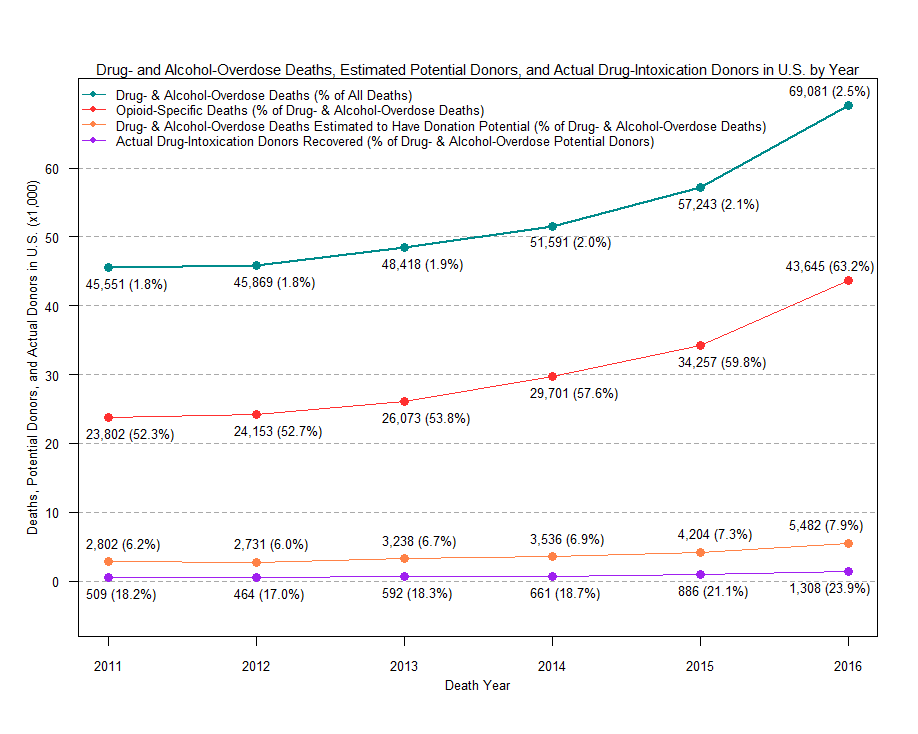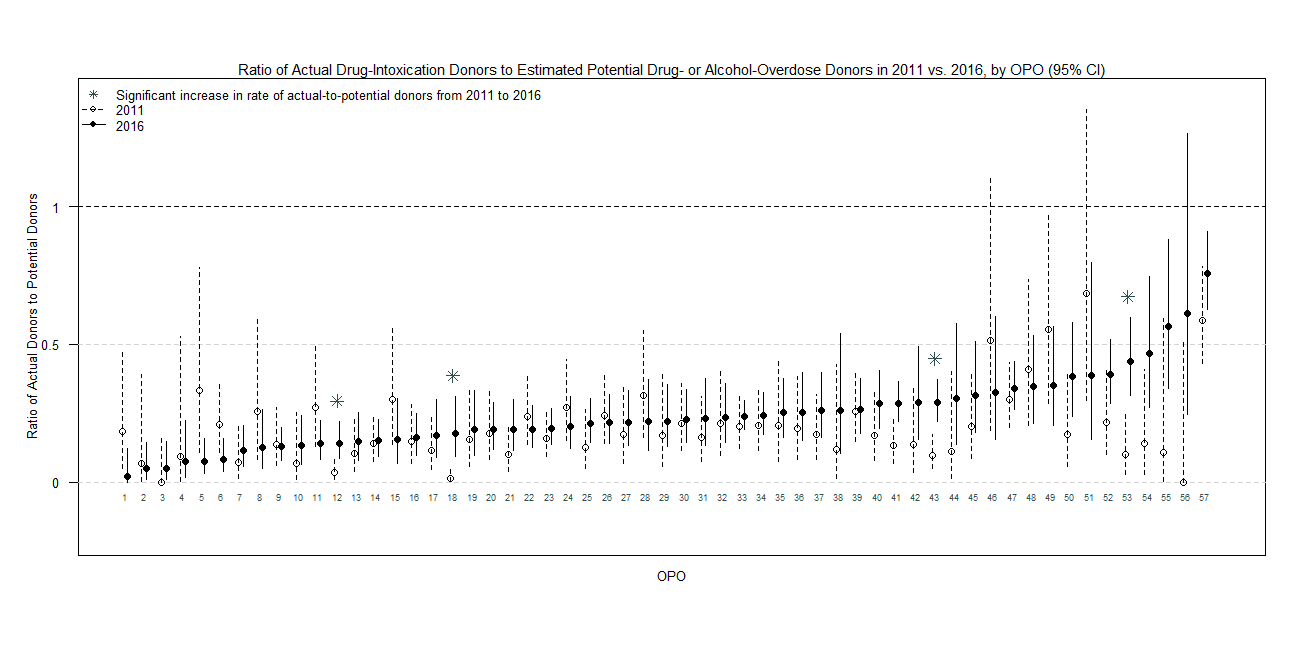Trends and Geographic Variation in the Recovery of Organs from Drug-Overdose Deaths with Donor Potential
Research, UNOS, Richmond, VA
Meeting: 2019 American Transplant Congress
Abstract number: 504
Keywords: Donation
Session Information
Session Name: Concurrent Session: Non-Organ Specific: Disparities and Access to Healthcare I
Session Type: Concurrent Session
Date: Tuesday, June 4, 2019
Session Time: 2:30pm-4:00pm
 Presentation Time: 3:06pm-3:18pm
Presentation Time: 3:06pm-3:18pm
Location: Room 208
*Purpose: The opioid crisis in the US and related increase in donors that died from drug-intoxication are well-documented. We set-out to estimate the proportion of drug-overdose deaths having donation potential and to characterize the variation in recovering organs from these potential donors.
*Methods: Multiple cause-of-death data from the National Center for Health Statistics and ventilation probabilities based on Nationwide Inpatient Sample data were used to estimate donor potential by employing the OPTN Deceased Donor Potential Study (DDPS) filtering methodology, including the age<=75 filter. OPTN data were used to identify actual drug-intoxication donors (DID). Exact rates with 95% Poisson confidence intervals compared the actual number of DID to the estimated number of drug- or alcohol-overdose (DAOD) deaths with donation potential at the national and Organ Procurement Organization (OPO) levels.
*Results: During 2011-2016, DAOD deaths increased by 51.7% (Figure 1) while all-cause deaths increased by only 9.1%. Opioid-specific drug-overdoses comprised 52.3% of DAOD deaths in 2011 and increased to 63.2% in 2016. The estimated number of potential DAOD donors nearly doubled between 2011 and 2016, from 2,802 to 5,482. Actual DID increased 157% from 2011 to 2016. As well, the ratio of actual DID to potential DAOD donors increased from 18.2% in 2011 to 23.9% in 2016.
Figure 2 shows that the ratio of actual DID to potential DAOD donors ranged from 0.02 to 0.76 across the 57 OPOs (Puerto Rico excluded) in 2016. This ratio increased from 2011 to 2016 for 40 OPOs (four increased significantly) and decreased for only 17 OPOs (none statistically significant).
*Conclusions: The percentage of DAOD deaths with donation potential is small but increasing, as is the percentage of actualized potential; however, large variations in rates of actual-to-potential donors by OPO suggests missed donor realizations.
To cite this abstract in AMA style:
Garcia V, Stewart D, Rosendale J. Trends and Geographic Variation in the Recovery of Organs from Drug-Overdose Deaths with Donor Potential [abstract]. Am J Transplant. 2019; 19 (suppl 3). https://atcmeetingabstracts.com/abstract/trends-and-geographic-variation-in-the-recovery-of-organs-from-drug-overdose-deaths-with-donor-potential/. Accessed December 14, 2025.« Back to 2019 American Transplant Congress


